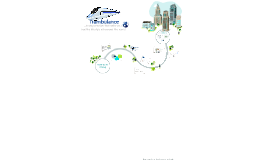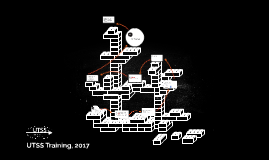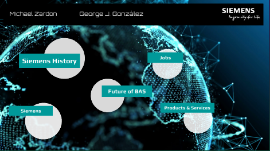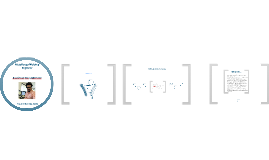Presentation for Siemens
Transcript: OVERVIEW 2008 • CWI • Welding • Procedures and process • Robotic & Automation • Inspections & testing Technical Skills WPS, WPQ & PQR witness, review, training and qualification NDE activities such as UT, RT, MT and PT (Evaluate to ASME & AWS Code Standards) Developing Quality Standards and QAP/ITP, Test plans, Maintain and Track NCR Reports. Drafting and designing in AutoCAD and SolidWorks. Robotic Welding. Prototype welding on ABB and KUKA robots Welding, cutting & drilling FMEA & Fishbone analysis, TQM, Lean Six Sigma Training Tutor for CSWIP 3.1 weld course Expertise in handling ISO 9001, ISO 16949 & OHSAS audits in various strategic business units Skills & Achievements Software Skills Masters in Welding Engg, NIT, India EDUCATION MS-Materials Engg, UNT, TX 2004 Customer Interaction Field Visit Quality Improvement (Lean, Six sigma, FMEA) WORK EXPERIENCE Masters-Material Science & Engineering GPA: 3.3 Management Skills TATA Projects Limited Outstanding Performer of the Year 2011 - 2012 Outstanding Performer of the Year 2012 - 2013 Silver Academy Award 2014 - Project Execution Masters-Welding Engineering GPA: 3.7 National Institute of Technology, Trichy, India Born in Mancherial, India Thank you Liaison to planning, purchasing, and production departments Monitor inventory work flow reports Developing/ modifying material & document expediting procedures Analyze workflows and processes, and propose customized changes for more efficient results. Expediting. Follow up with vendors Assessment of vendor's manufacturing/ technical/ quality system Tracking and Verifying purchase Responsibilities Characterization of simulated heat affected zone in P92 steels at WRI Trichy India Responsibilities Responsibilities Core Qualities Diverse Domain Knowledge(Oil & Gas, Power & Energy, Automotive, Construction Products) Team Leadership & Project Management Why Me... Metallurgy/Welding Engineer Ravikiran Rao Avirineni NDE ASNT-II RT, UT, MT & PT Procedures Inspection & testing Overview of my past 29 years Code Knowledge 2014 Metallurgy/Welding Engineer -Halliburton Achievements November 30, 2016 Bachelors in Mechanical Engg, Osmania Univ, India ASME Sec II, V, VIII, IX, B13.1, B13.3 AWS D1.1, D1.2, B2.1 API 5L, 1104, 610, 598, Spec 5B ISO 15614, ISO/TC67 NACE MR0175 Welding Engineer, Tata Projects Ltd, India Bachelors-Mechanical Engineering GPA: 3.3 • More than 3 years of experience in leading the project team • Customer requirement understanding & study, proposal preparation, estimating project timelines, project execution • Responsible for quality checks, quality assurance as per CMMI standards for customer deliverables and review meetings and issue resolutions • Coordination with vendors/suppliers for Prototype generation • Well versed with Microsoft Word, Excel, Power Point & MS Project MATLAB LabVIEW Solid Works AutoCAD Others Initiated and organized blood donation camps Organized corporate social responsibility events Senior Engineer (Welding Metallurgy) June 2010 – July 2014 6+ Years Of Experience... 2008 Osmania University, Hyderabad, India I have always made genuine efforts towards achieving more technical exposure which in turn has enabled me to have hand-on experience on various technologies and tools. I have always tried to not be Domain bound and have worked and gathered knowledge and work experience in various domains I have always tried to be the face of the project and tried to be the go to person in any of the client queries or meetings thereby always building a good rapport and a close working relationship with all my clients I am a quick learner and have demonstrated this by learning various technologies , methods and tools during my career when as and when it was required during the execution of the project. I have an enriched relevant work experience of 5+ years in the in the Power & Energy domain , as well as construction product domain with expertise in welding, quality control, auditing and inspections, which puts me in the good position to be considered for this role I always pride myself for having a never quenching thirst to learn, improve and grow and for that I motivate myself at every step. I have a passion towards what I have learned and what I do, that is engineering and wish to continue the same Presented Papers Halliburton Management Skills Metallurgy/Welding Engineer May 2016* About me 1987 Single point contact • WPS, WPQ w.r.t ASME IX, AWS D1.1 & B2.1 welding codes Welding processes, welding consumables SMAW, GMAW, GTAW, SAW, FCAW • Selecting of materials • NDE (UT,RT,PT &MT) w.r.t ASME Sec V, SNT-TC-1A • Heat Treatment, Post Weld Heat Treatment (PWHT) and stress relieving • Providing support • Training personnel Lead welding area in 3 member metallurgy team at Halliburton Lead welding and inspection team at TATA Projects Ltd. India (3 welding engineers, 1 NDE, 3 welders, 3 cutters etc) Coordinated with design and production team in key areas of manufacturing Audited quality and safety of

















